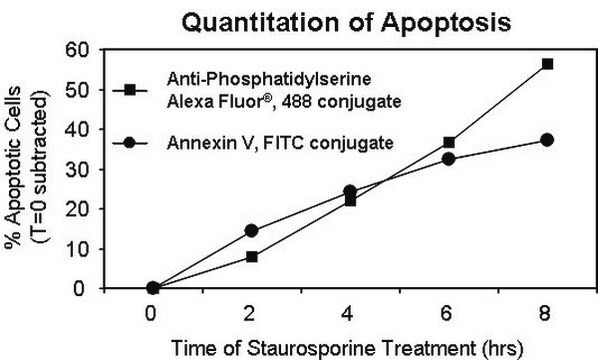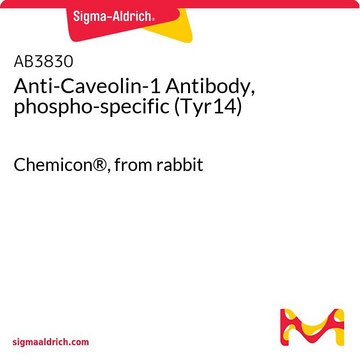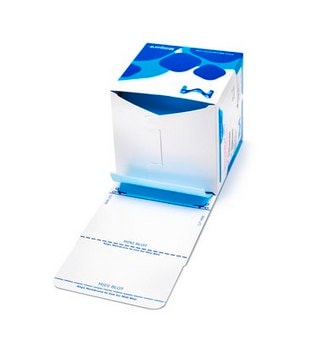05-480
Anti-Eck/EphA2 Antibody, clone D7
clone D7, Upstate®, from mouse
Sinónimos:
EPH receptor A2, Epithelial cell kinase, Tyrosine-protein kinase receptor ECK, ephrin receptor EphA2, epithelial cell receptor protein tyrosine kinase, protein tyrosine kinase, receptor protein tyrosine kinase regulated by p53 and E2F-1
About This Item
Productos recomendados
origen biológico
mouse
Nivel de calidad
forma del anticuerpo
purified immunoglobulin
tipo de anticuerpo
primary antibodies
clon
D7, monoclonal
reactividad de especies
mouse, canine, human, rat, bovine
fabricante / nombre comercial
Upstate®
técnicas
activity assay: suitable
immunocytochemistry: suitable
immunoprecipitation (IP): suitable
western blot: suitable
isotipo
IgG1
Nº de acceso NCBI
Nº de acceso UniProt
Condiciones de envío
dry ice
modificación del objetivo postraduccional
unmodified
Información sobre el gen
bovine ... Epha2(512798)
human ... EPHA2(1969)
Descripción general
Protein kinases are enzymes that transfer a phosphate group from a phosphate donor, generally the g phosphate of ATP, onto an acceptor amino acid in a substrate protein. By this basic mechanism, protein kinases mediate most of the signal transduction in eukaryotic cells, regulating cellular metabolism, transcription, cell cycle progression, cytoskeletal rearrangement and cell movement, apoptosis, and differentiation.
Especificidad
Inmunógeno
Aplicación
A previous lot of this antibody has been reported to have been used in an immunoprecipitation autophosphorylation assay, using a Mn-PIPES reaction buffer (Romer, L., 1994).
Immunoprecipitation:
A previous lot of this antibody has been reported to immunoprecipitate Eck from 500 µg of a human breast epithelial cell line which had been lysed in TBS containing 1% Triton X-100. Use 1-4 µg per reaction.
Immunocytochemistry:
A previous lot of this antibody has been reported to immunostain Eck in human, mouse and rat epithelial cells fixed with 3.7% formaldehyde solution and permeabilized with 0.5% Triton X-100 in TBS.
Neuroscience
Growth Cones & Axon Guidance
Calidad
Western Blot Analysis:
0.5-2 µg/mL of this lot detected Eck in RIPA lysates from human A431 and previously from foreskin fibroblasts, murine 3T3/A31 and rat L6 cells.
Descripción de destino
Forma física
Almacenamiento y estabilidad
Handling Recommendations:
Upon receipt, and prior to removing the cap, centrifuge the vial and gently mix the solution. Aliquot into microcentrifuge tubes and store at -20°C. Avoid repeated freeze/thaw cycles, which may damage IgG and affect product performance. NOTE: Variability in freezer temperatures below -20°C may cause glycerol-containing solutions to become frozen during storage.
Nota de análisis
Positive Antigen Control: Catalog #12-301, non-stimulated A431 cell lysate. Add 2.5µL of 2-mercaptoethanol/100µL of lysate and boil for 5 minutes to reduce the preparation. Load 20µg of reduced lysate per lane for minigels.
Otras notas
Información legal
Cláusula de descargo de responsabilidad
¿No encuentra el producto adecuado?
Pruebe nuestro Herramienta de selección de productos.
Código de clase de almacenamiento
10 - Combustible liquids
Clase de riesgo para el agua (WGK)
WGK 1
Certificados de análisis (COA)
Busque Certificados de análisis (COA) introduciendo el número de lote del producto. Los números de lote se encuentran en la etiqueta del producto después de las palabras «Lot» o «Batch»
¿Ya tiene este producto?
Encuentre la documentación para los productos que ha comprado recientemente en la Biblioteca de documentos.
Nuestro equipo de científicos tiene experiencia en todas las áreas de investigación: Ciencias de la vida, Ciencia de los materiales, Síntesis química, Cromatografía, Analítica y muchas otras.
Póngase en contacto con el Servicio técnico








